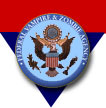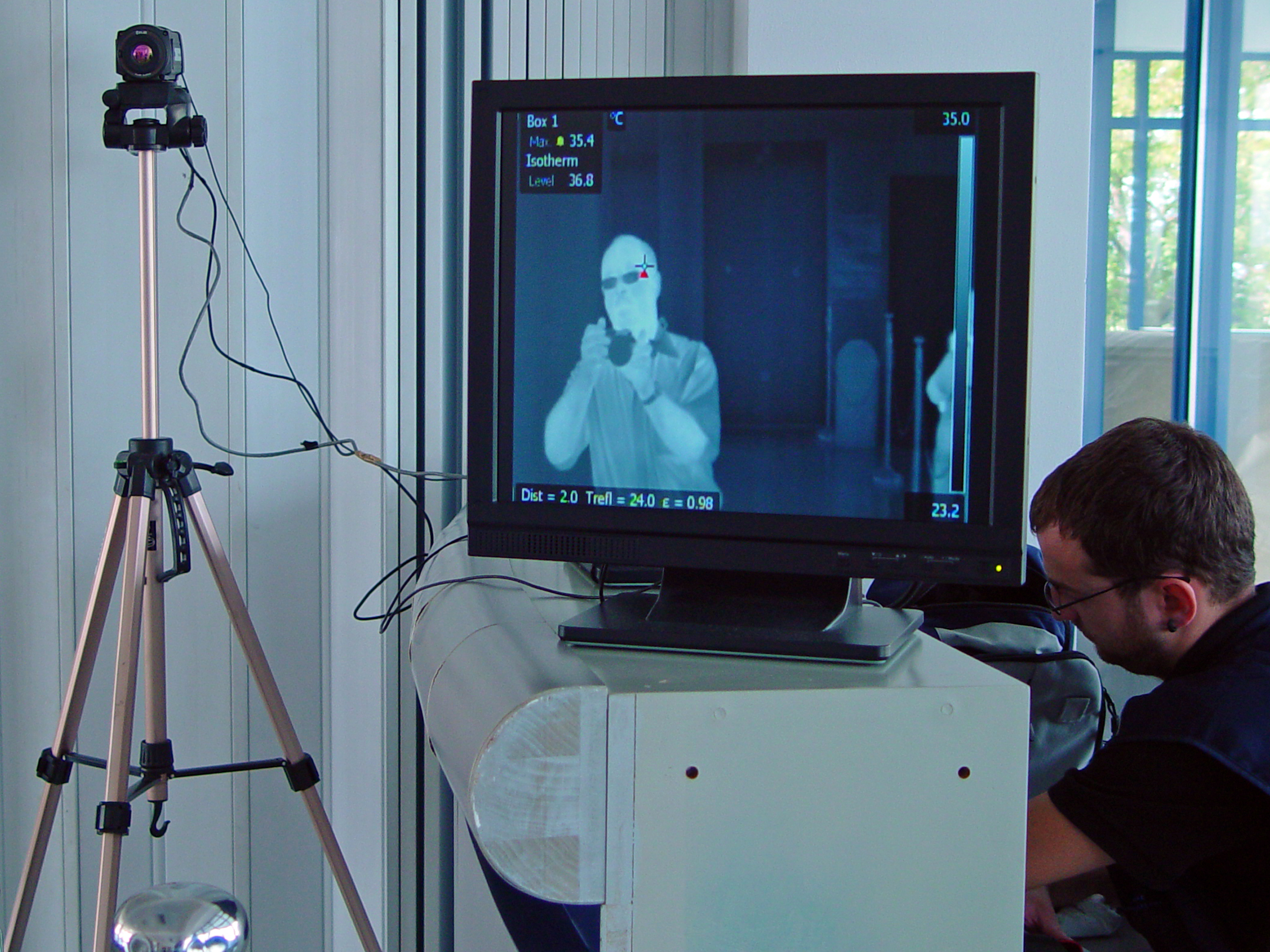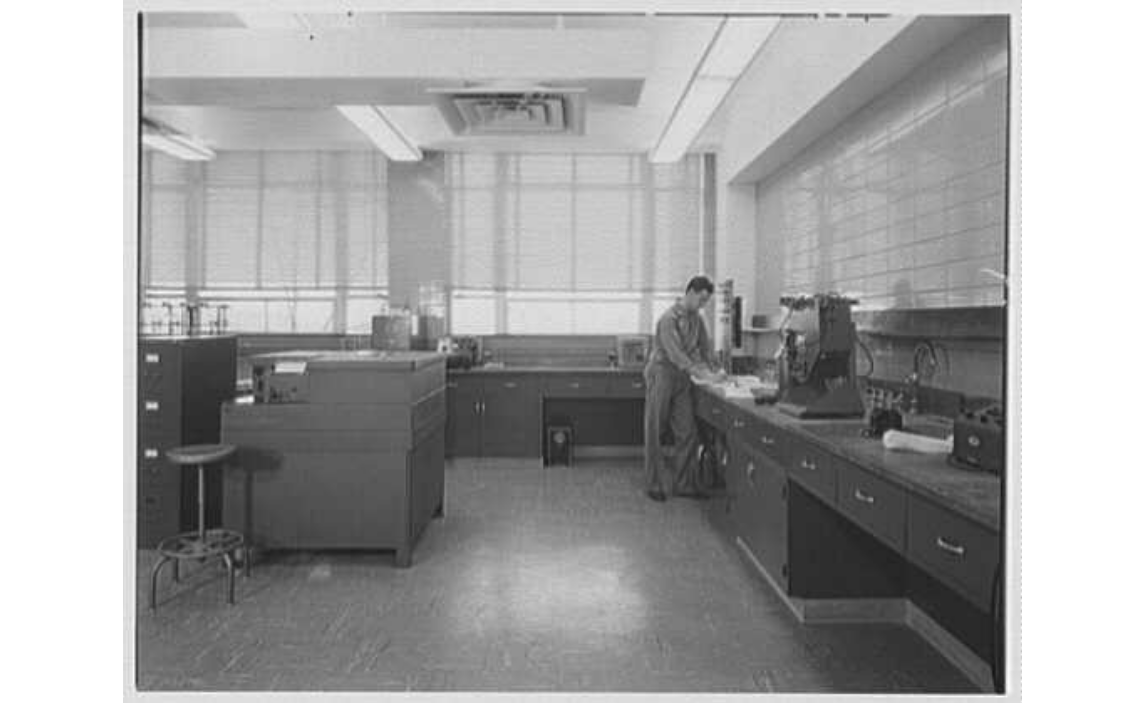

Historical Tales | News | Vampires | Zombies | Werewolves
Virtual Academy | Weapons | Links | Forum
 |
 |
Historical Tales | News | Vampires | Zombies | Werewolves Virtual Academy | Weapons | Links | Forum |
By now you've probably seen images of thermal cameras being deployed at major airports in an effort to spot people with coronavirus-associated fevers. What you may not know is that the basis for this technology was originally developed by scientists with the now-defunct Federal Vampire and Zombie Agency (FVZA).
 |
A thermal imaging camera at an airport |
Thermal cameras function similarly to regular cameras, except that instead of recording the light that objects reflect, they read the heat coming off them. The cameras are so sensitive that they can even work in the dark. Recordings from these cameras show up on video screens, with hotter objects appearing brighter.
The technology grew from the work of Leonard Norkin, Ph.D., an engineer at the FVZA's research and development laboratory in Livingston, New Jersey.
Dr. Norkin had worked on the military applications of infrared light during World War II and became convinced that the technology could have a role in the fight against vampirism. After the war, he joined the FVZA and spent the next 10 years developing thermal cameras for use in vampire identification.
The stakes were high. Throughout its history, the agency had struggled to positively identify vampires. The most definitive markers of vampirism —fangs, lower body temperature, black eyes—were virtually impossible to confirm from a safe distance. As a result, agents were often forced to let a suspected vampire go for fear of harming an innocent person.
 |
Leonard Norkin at work inside
|
Dr. Norkin's work on thermal cameras took advantage of the fact that when humans infected with Human Vampiric Virus awaken from a vampiric coma, their temperature is as much as 30 degrees lower than that of uninfected person. The thermal camera he developed produced "false color" representations of objects, with different colors representing different temperatures. Agents had only to train the camera on a person of interest and they would instantly know based on the thermal map on the monitor if that person was a vampire.
Thermal cameras vastly improved vampire-abatement efforts and hastened the end of vampires as a significant threat to the U.S. population.
After the FVZA was shuttered in 1975, the camera that Norkin developed was declassified. The technology company Honeywell then licensed it to several manufacturers.
Today's cameras represent a significant improvement over the ones used by the FVZA. They have a higher resolution and are less expensive. They were first used during the SARS outbreak in 2002 and 2003, and are now in use all over the world to help fight the spread of COVID-19.